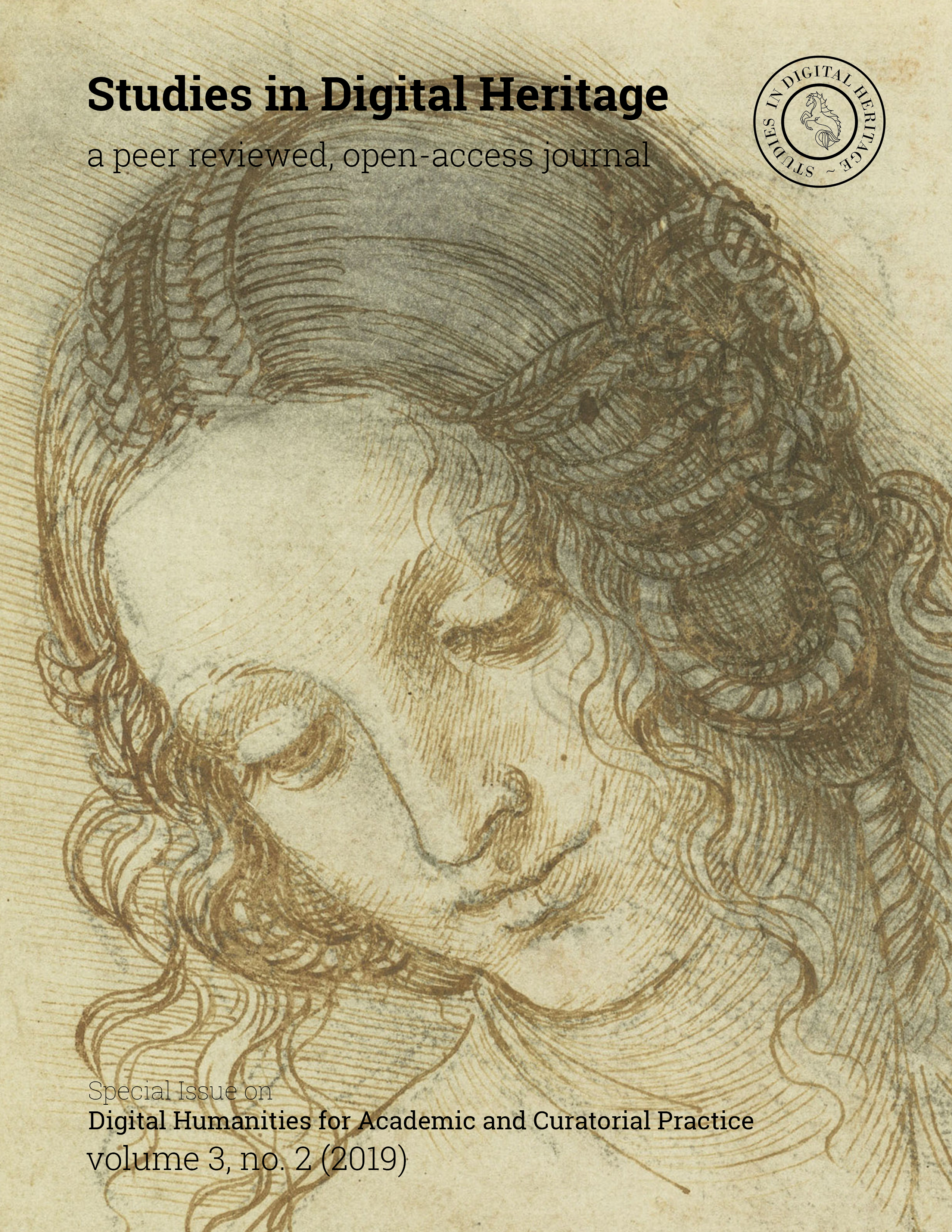Digital Humanities for Academic and Curatorial Practice
Main Article Content
Abstract
The Digital Humanities have challenged all disciplines of Art History to engage with new interdisciplinary methodologies, learn new tools, and reevaluate their role within academia. In consequence, art historians occupy a new position in relation to the object of study. Museums have been equally transformed. The possibilities of creating virtual realities for lost/inaccessible monuments poses a new relationship between viewer and object in gallery spaces. Digital Humanities interventions in museums even allow us to preserve the memory of endangered global heritage sites that cease to exist or are inaccessible (celebrated examples including the lost Great Arch of Palmyra reconstructed with a 3D printer). Curatorial practices are now trending towards a sensorial and experiential approach. Is the role of Digital Humanities, in academic as well in museum settings, to “reveal” the object itself, through an empirical display of existing material, or to “reconstruct” something of the original experience of the object to engage spectators? Can we propose a reconciliation between these two “poles”? The Sixth International Day of Doctoral Studies promoted by RAHN aims to investigate the role of Digital Humanities by fostering a dialogue between the protection of cultural heritage sites, museology, the history of art, and the digitalization of Big Data.
Downloads
Article Details
From 18 May 2018, the contents of Studies in Digital Heritage are licensed under a Creative Commons Attribution-NonCommercial 4.0 International License (CC BY-NC 4.0). Our submitting authors pay no fee and retain the copyright to their own work.
How this works: to submit their work to the journal, authors grant Studies in Digital Heritage a nonexclusive license to distribute the work according to a CC BY-NC 4.0 license. Once an article is published, anyone is free to share and adapt its contents—provided only that they do so for noncommercial purposes and properly attribute the shared or adapted information. Details of these terms can be found on the Creative Commons website.
Download SDH’s full author agreement here
Studies in Digital Heritage will insert the following note at the end of any work published in the journal:
© [Year] by the authors. This article is an open-access article distributed under the terms and conditions of the Creative Commons Attribution License CC BY-NC 4.0 (https://creativecommons.org/licenses/by-nc/4.0/).


